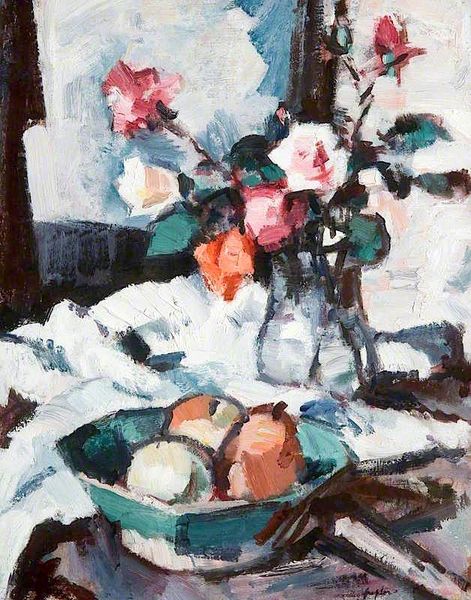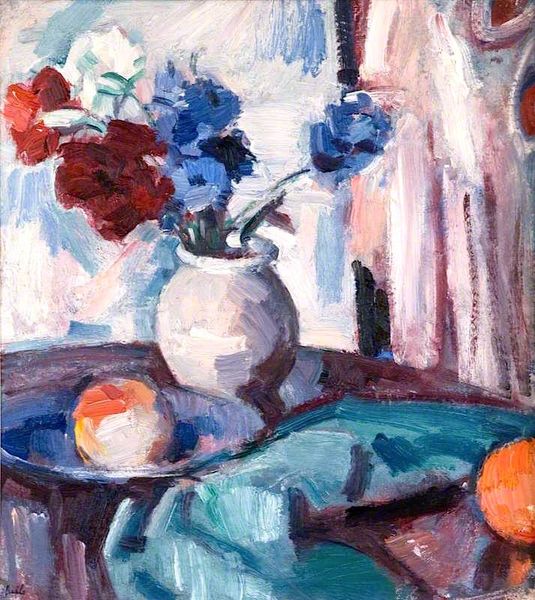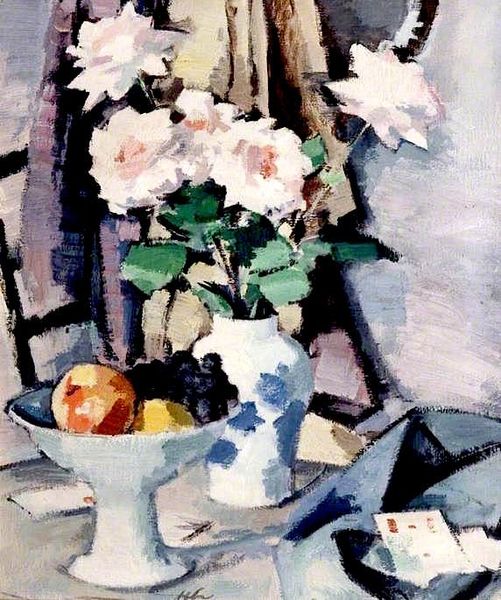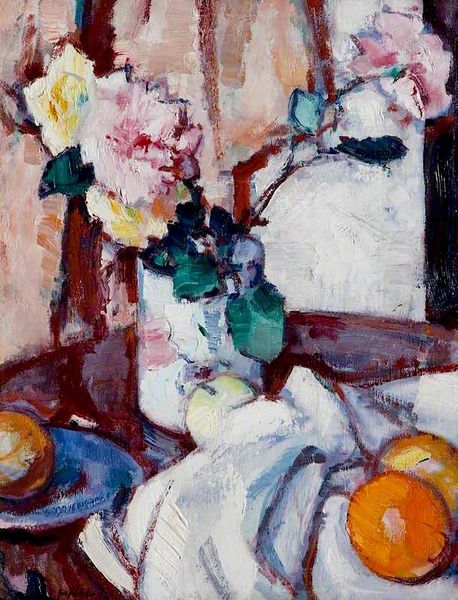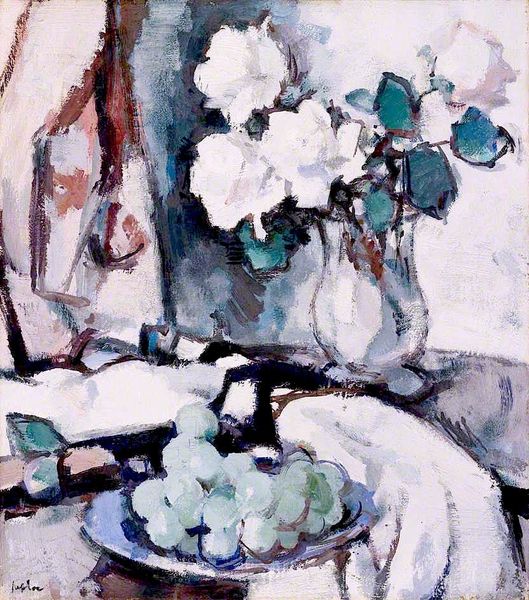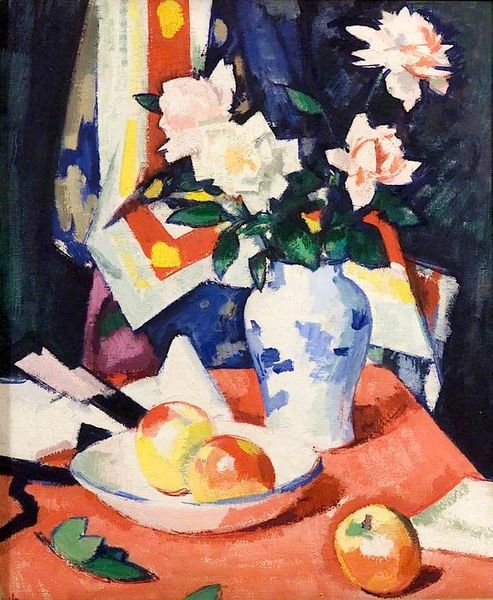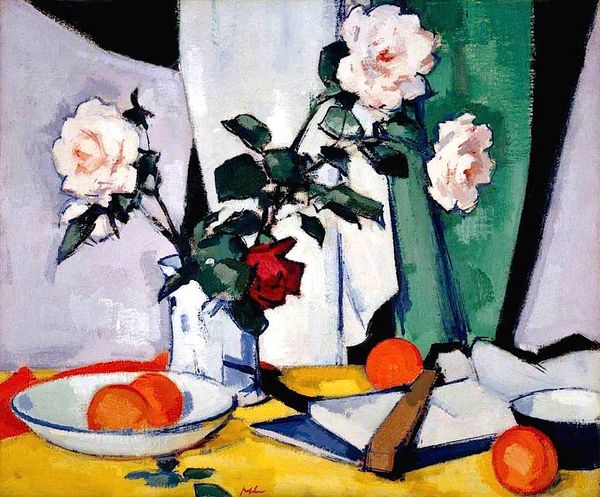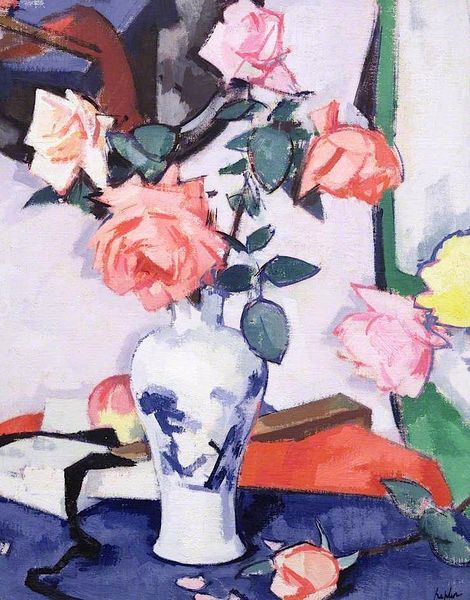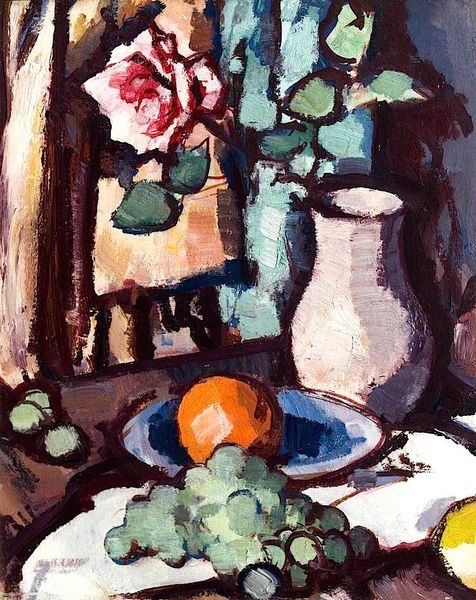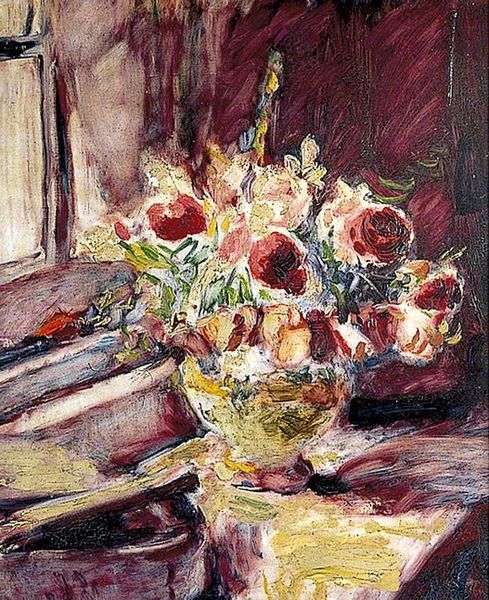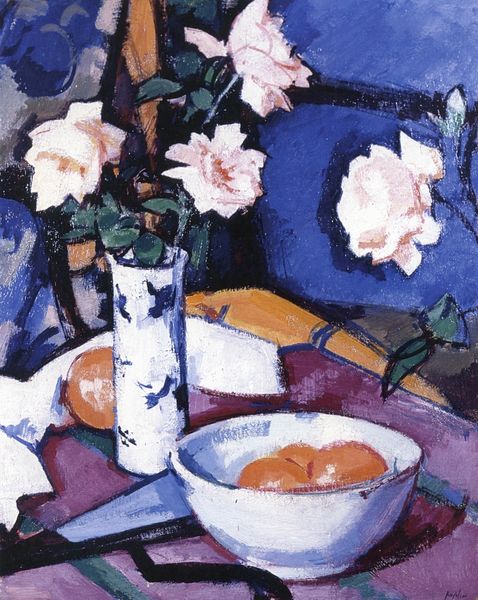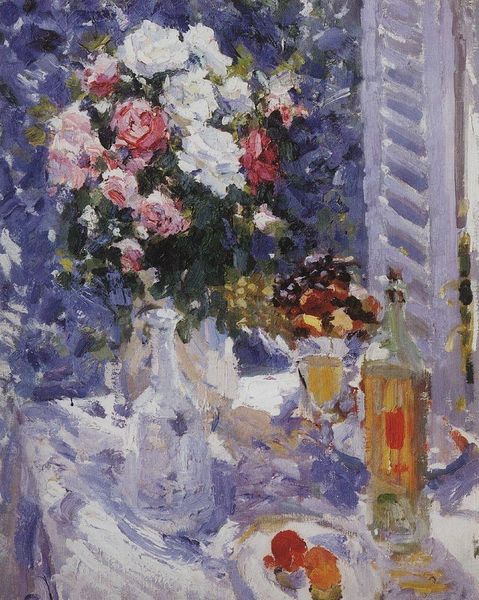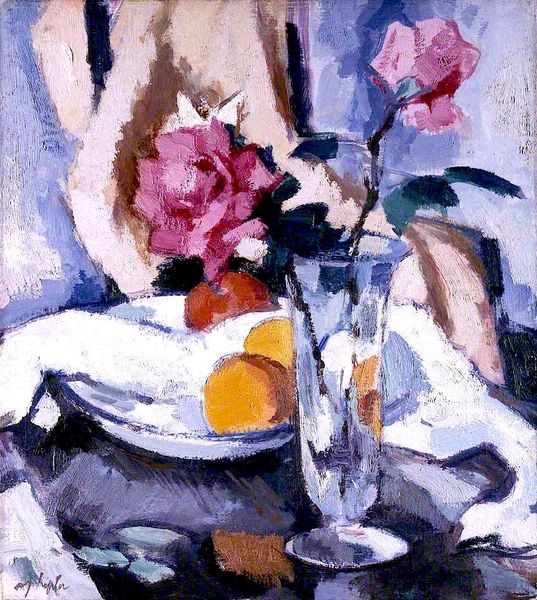
Copyright: Public domain
Editor: Samuel Peploe’s "Still Life" from 1930, crafted with oil paint, strikes me as a study in contrasts—the vibrant orange against the muted floral hues, the delicate roses versus the solid fruit. What stands out to you? Curator: Considering a materialist viewpoint, I'm drawn to how Peploe uses oil paint. The thick, visible brushstrokes reveal the labor and the physicality of the process. How does the application of the paint itself contribute to the work's meaning for you? Does the way Peploe works with the materiality challenge traditional, academic approaches? Editor: I see what you mean. It feels almost unfinished, which makes the skill more impressive! What about the objects chosen? I guess he wasn’t just picking anything that looked good. Curator: Precisely. Think about the context: 1930, between the wars, economic anxieties. The accessibility of everyday objects like an orange, mass-produced glassware, or readily available flowers becomes noteworthy. It could be viewed as an embrace of the commonplace. Do you think the lack of precious, ornate objects reflects a societal shift away from traditional displays of wealth and status? Editor: Maybe. Focusing on accessible objects seems almost like a statement. But were artists at the time aware that they were making a political statement like this? Curator: That’s the beauty of it! It’s hard to say what Peploe’s intent was specifically. But by considering the socio-economic conditions and the materials used, we can appreciate how his "Still Life" departs from previous approaches. Editor: That's really changed how I see it. Looking at the labor involved, rather than just the aesthetics, gives the work a whole new depth. Curator: Absolutely. Hopefully, by focusing on the materials and context, we can reveal other interpretations that traditional analyses may overlook.
Comments
No comments
Be the first to comment and join the conversation on the ultimate creative platform.
